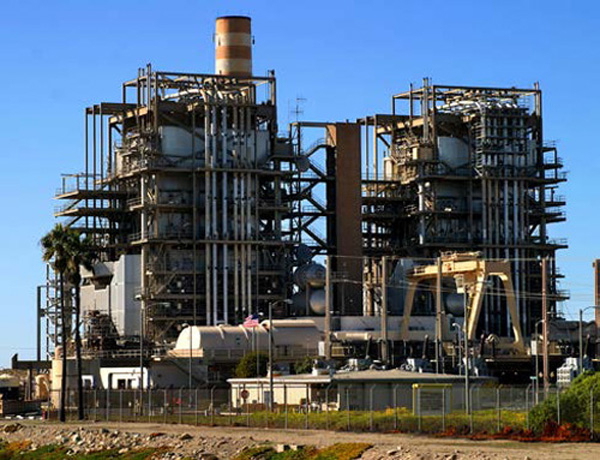

Courtesy: EPRI
The Energy Information Agency (EIA) reports that 23% of the electricity generated in the United States in 2009 came from burning natural gas. That year natural gas plants were responsible for approximately 18% of the carbon dioxide (CO2) equivalent and 6% of the nitrogen oxides (NOx) emitted from U.S. electricity generation. Natural gas is set to increase its share of the U.S. power generation fuel mix in coming years. The EIA estimates that 51 GW of new electricity capacity will be added between 2009 and 2015, with 47% from natural gas combined cycle or combustion turbines. In April 2012, natural gas and coal each provided the same share of total net generation of electricity (32%).
With renewed interest in use of this fuel for electric power generation, a review of recent research investigating the environmental impacts of natural gas power plants, in particular those related to atmospheric emissions, is of interest to the electric power industry and its stakeholders. The Electric Power Research Institute (EPRI) recently prepared a report on this topic.
Knowledge Gaps
EPRI found that several knowledge gaps exist in terms of air quality impacts from natural gas electricity generation:
- Accurate and precise particulate matter (PM) emissions measurements at the stacks of natural gas combustion facilities, and the corresponding methods to determine those, are needed.
- Information on the emissions, environmental fate, and human health impacts of ultrafine particles from natural gas combustion facilities is needed.
- Improved NOx and volatile organic compound (VOC) emissions inventories for all natural gas extraction regions, but particularly the rapidly increasing shale development regions, are needed, along with corresponding air quality modeling and assessments of factors that contribute to any regional air quality impacts.
- Additional measurements of the emission factors of a number of compounds during power plant startup and shutdown activities are needed, along with assessments of how cycling of these plants could impact both net grid or sub-grid regional emissions estimates, as well as short-term daily or hourly impacts on air quality in more immediate locations.
Particulate Matter Emissions
Monitoring of particulate matter (PM) from natural gas facilities is very challenging due to low PM emission rates. Both filterable and condensable PM emissions remain very difficult to measure at natural gas power plant stacks.
The methods with highest potential for accuracy involve dilution tunnel sampling. However, even these methods have background PM2.5 concentrations from the dilution air used (despite the use of high-efficiency particulate arresting [HEPA] filtration), such that this dilution air was the source of most of the overall measurement uncertainty. The dilution air itself must be measured carefully to understand the background PM values for each testing situation. It is important to note that the composition of PM determined from testing with dilution methods as opposed to more traditional impinger methods results in a shift in dominance from sulfurous compounds to carbonaceous compounds.
Regardless of the method used, and even with extreme care taken in method application, the blank PM values can in many cases approach the measurement values, and be highly variable. Thus, although the emissions of PM may be small, even small changes in method application, or changing of compliance samplers, may affect the emissions compliance status of a power plant.
Ultrafine Emissions
Ultrafine particles (UFP) are a subset of PM of less than 100 ?m in diameter (PM0.1). Very little is known about UFP emissions, although they are emitted from natural gas combustion processes. No data were found to be available from grid-connected natural gas power plants, but data were available from test combustors and smaller independent facilities.
The results suggested that the particle diameters with the highest particle count were in the small 10s of nanometers range, which was significantly smaller than the size of UFP from coal-fired power plants. Initial indications from a few studies suggested that particle number increases at higher load, but other equally valid studies did not observe this. Therefore, a full assessment of the impact of UFP emissions from natural gas power plants was not possible.
Shale Gas Extraction
Emissions of VOCs from shale gas extraction operations, combined with NOx and VOC emissions from the associated equipment, as well as certain meteorological conditions, have caused dramatic increases in surface ozone concentrations during winter in the Western U.S. For example, Wyoming winter 8-hour ozone concentrations have reached 120 ppb, when a more common concentration for the winter West is on the order of 30 ppb to 50 ppb. Prior lack of ambient monitoring in some areas had delayed detection of this problem, along with substantial numbers of unreported pieces of equipment with large emissions of NOx and VOCs. At this time the quality of emission inventories for U.S. shale gas development is uncertain, patchy in geographic coverage, and disparate in design. Some regions, like the Marcellus shale, do not yet have emission inventories.
Much of the emissions work performed thus far focuses on methane (for the purposes of improving understanding of fugitive shale gas losses and potential greenhouse gas impact) and VOCs (in particular, the hazardous air pollutants) due to the potential for increased risks of human health impact. However, there has been little focus on NOx emissions from drilling, fracking, and operational equipment. This is true despite many development areas being located in photochemical ozone formation airsheds in which ozone formation is NOx-, rather than VOC-limited.
Despite the crucial need for additional data, it appears that, based on modeling studies, sufficient ozone precursors do exist as a result of shale gas extraction activities to make a significant difference to regional ozone in some areas. Only two regions (parts of Colorado and Texas/Louisiana) appear to have gone as far as estimating regional impacts on ozone for a limited number of conditions. More air quality modeling work in those areas, as well as in other gas development regions, is critical. In addition, it is important to understand the impacts of planned approaches, such as using natural gas or electrification to power engines involved in gas extraction.
It should be noted that even small impacts on ozone can move an area into a National Ambient Air Quality Standards (NAAQS) nonattainment classification due to the recent lowering of the standards, high levels of background ozone in many areas of the country, and the fact that ozone formation is strongly dependent in many areas on biogenic VOCs. Despite the importance of quantifying these potential impacts in preparation for the upcoming ozone and PM NAAQS state implementation plan processes, in most areas the raw data are simply not available with which to do so.
Power Plant Startup and Shutdown Operations
Emissions of several compounds can increase substantially during combustion conditions that may occur during plant startup and shutdown. Several studies have shown that VOCs can increase by multiple orders of magnitude (100- to 10,000-fold) during these times of inefficient combustion; carbon monoxide (CO) and NOx have also been shown to increase by less than 10-fold during these times.
The air quality impact of these emissions changes is unclear. It is projected that more frequent cycling events will occur with all types of fossil fuel power plants in the future, as part of activities to dynamically balance grid load. There are a number of unknown implications of this type of operational mode, including impacts to equipment lifetime, plant efficiency and emissions, and resulting air quality impacts. These impacts can be difficult to assess based on insufficient advanced notice cycling events, the short duration of these events, and the inability to measure the full suite of emissions during these events (due to the inability of sampling and analytical methods to work properly and potentially insufficient event duration to collect meaningful data).
It may be possible to inform these unknowns by performing sensitivity testing through air quality modeling approaches. For example, a range of potential emissions inventories could be created based on the currently available or new power plant and test combustor data, which could be input into air quality models to determine the sensitivity of potential air quality impacts to certain emission ranges. This type of approach could inform a more detailed future suite of relevant measurement and modeling studies.
In addition, there is a need for additional modeling of the net impacts to aggregated emissions from the electric generation facilities by grid or sub-grid region as a function of dynamic control and load balancing. Such research should include dispatch modeling and incorporate the full range of generation technologies (including all fossil fuel plants) present in the relevant area.
Potential Health Impacts
Although very limited data exist regarding exposure and toxicity issues related to natural gas extraction activities and combustion in power plants, some general conclusions can be drawn.
Due to shorter stacks and lower-temperature flue gas than for coal-fired plants, as well as higher likelihood of being located in more densely populated areas, natural gas–fired power plant plumes may be more susceptible to downwash, less dispersion, and thus potentially higher population exposures near a facility.
The review of emissions suggests ultrafine particles may be emitted in high particle number from natural gas power plants; some evidence does exist that certain types of ultrafine particles have an independent role in human health impacts and are perhaps more of a health concern than larger particles. However, this would have to be determined on a facility-by-facility basis, with measurements and modeling.
Finally, while concern over the public health impact of natural gas, particularly shale gas, extraction exists, few public studies have been performed to date. Those that have suggest that rigorous scientific studies have not confirmed an association between gas production and adverse health effects.
EPRI Research
Many of the topics covered are being tracked by EPRI scientists, and in some cases independent research is being performed. EPRI’s air quality research programs are currently scoping specific technical research plans by which to improve methane, VOC, and NOx emissions inventories for oil and natural gas development and to further understand the impacts of these activities on regional ozone and PM2.5 concentrations. Two other research topics already being performed by EPRI’s air quality team are:
- Particle formation dynamics in fossil fuel power plant plumes, with a focus on ultrafine particles and nanoparticles in scenarios of the presence or absence of a variety of emissions control devices.
- Concentration and chemical composition measurements of ultrafine particles in ambient air and linking these particles to potential sources, including fossil fuel combustion.
Related research is also under way in other EPRI Environment research programs, and includes investigation of potential biases, artifacts, and applications related to PM emissions measurements at power plant stacks, and a study of potential water quality impacts of shale gas development.
It should be noted that many of the issues presented in this review have insufficient information at this time to be thoroughly evaluated for their importance to air quality. As more information is provided by EPRI or other independent research, additional periodic reviews of the emissions and resultant air quality impacts of natural gas generation may be conducted in the future.
—Dr. Shaw is a senior project manager at EPRI.










